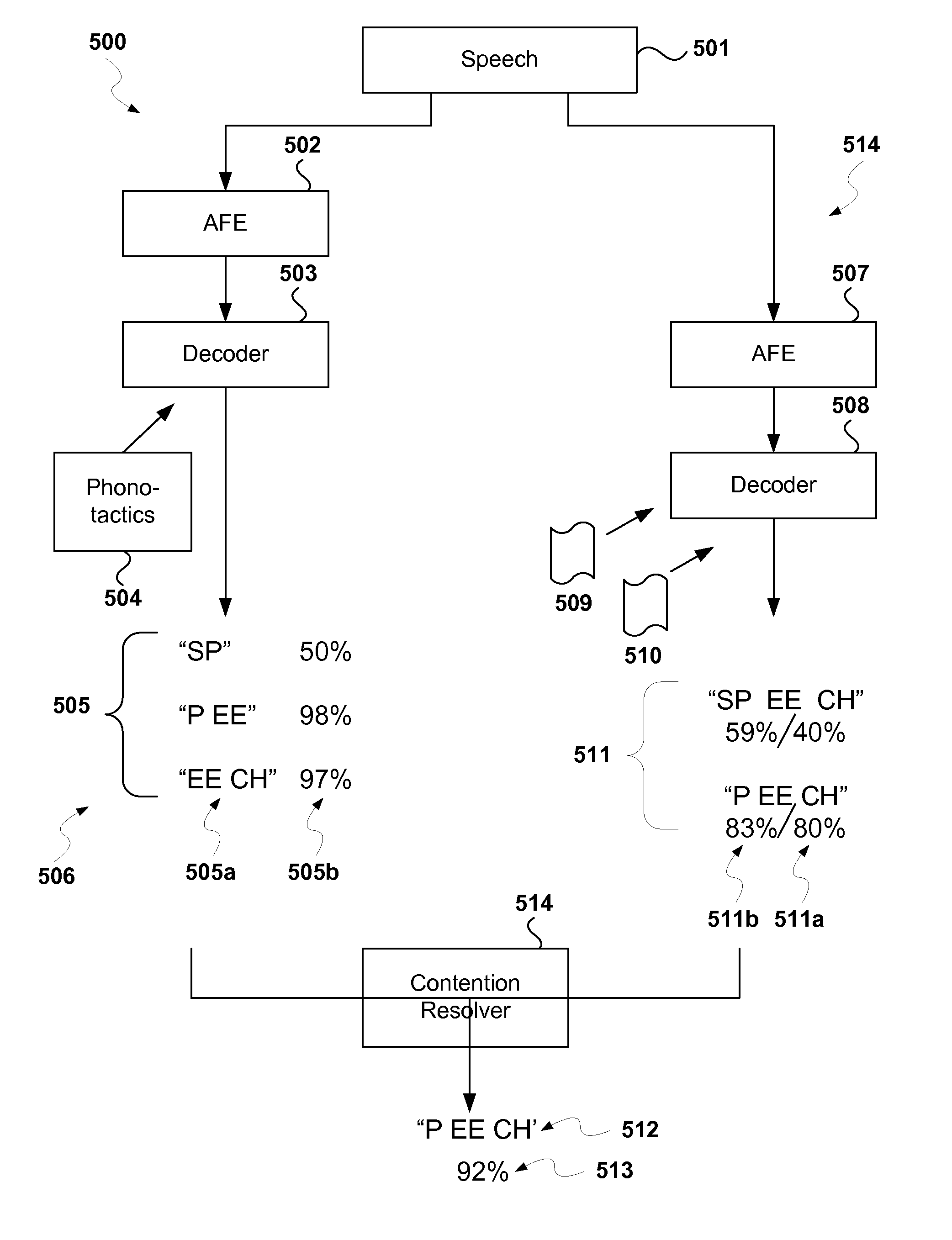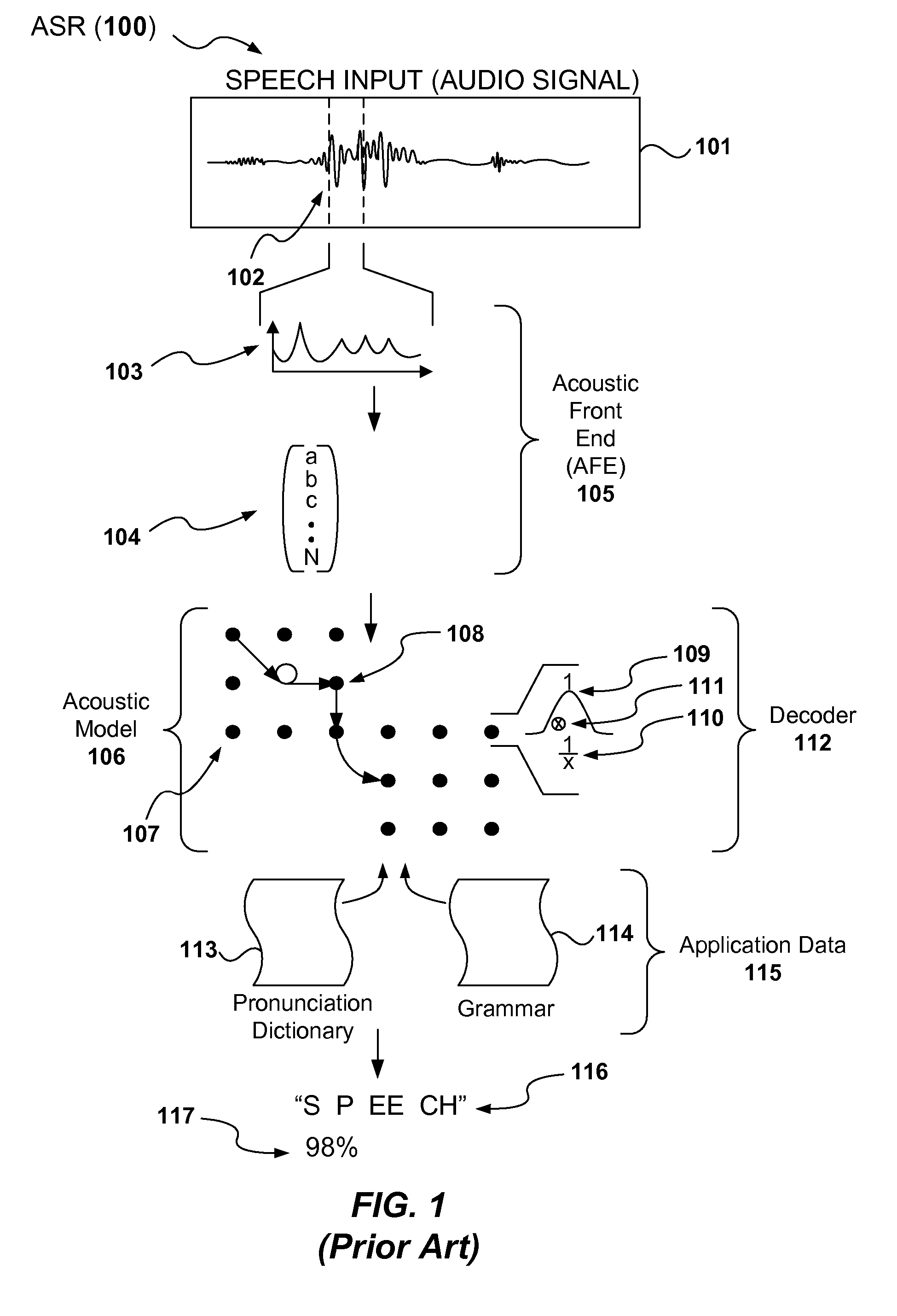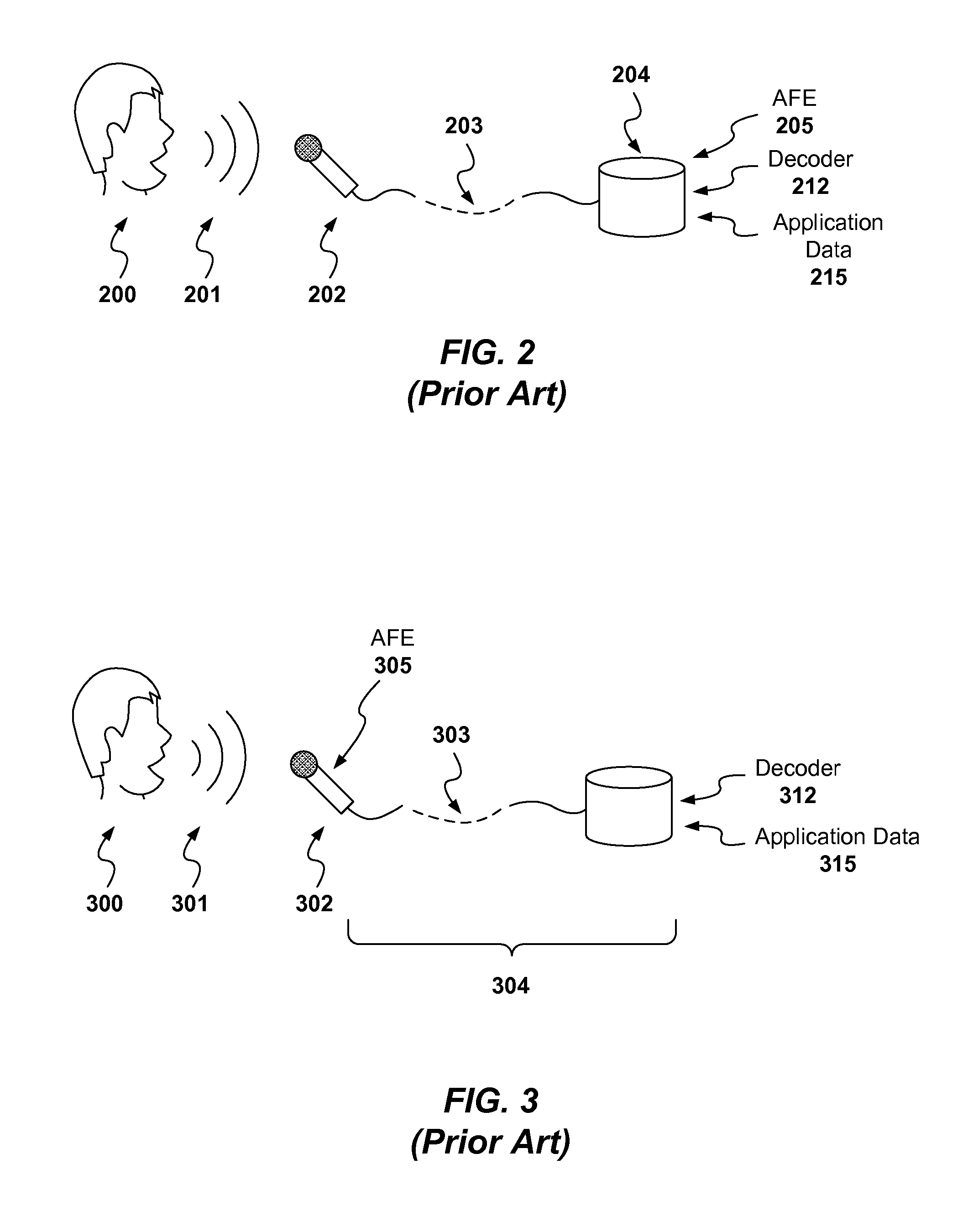Distributed voice recognition system and method
a voice recognition and distribution system technology, applied in the field of automatic voice or speech recognition, can solve the problems speaker dependent recognition losing the general applicability of speaker independent recognition, and applicability disadvantages of approaches
- Summary
- Abstract
- Description
- Claims
- Application Information
AI Technical Summary
Benefits of technology
Problems solved by technology
Method used
Image
Examples
Embodiment Construction
)
[0014]It is known that audio input (speech) can be converted to a machine-readable form (text) using ASR. This can be illustrated with reference to FIG. 1 as described here. The ASR process 100 comprises three common components: the acoustic front-end (AFE) 105, which is responsible for analysing the incoming speech signal 101, the decoder 112, which matches the parameterised audio to its acoustic model 106, and the application or user part 115, the grammar 114 and the associated pronunciation dictionary 113. The ASR process 100 therefore takes an audio signal 101 as input and produces a text string representation 116 as output.
[0015]To promote a better understanding of the present invention, this known process 100 will be described in more detail here. The audio signal 101 is first segmented over time into time-slices 102. These may be successive time intervals of say 10 to 50 milliseconds or overlapping. Each time slice 102 is then Hamming windowed, and via Fast Fourier Transform...
PUM
 Login to View More
Login to View More Abstract
Description
Claims
Application Information
 Login to View More
Login to View More - R&D
- Intellectual Property
- Life Sciences
- Materials
- Tech Scout
- Unparalleled Data Quality
- Higher Quality Content
- 60% Fewer Hallucinations
Browse by: Latest US Patents, China's latest patents, Technical Efficacy Thesaurus, Application Domain, Technology Topic, Popular Technical Reports.
© 2025 PatSnap. All rights reserved.Legal|Privacy policy|Modern Slavery Act Transparency Statement|Sitemap|About US| Contact US: help@patsnap.com



